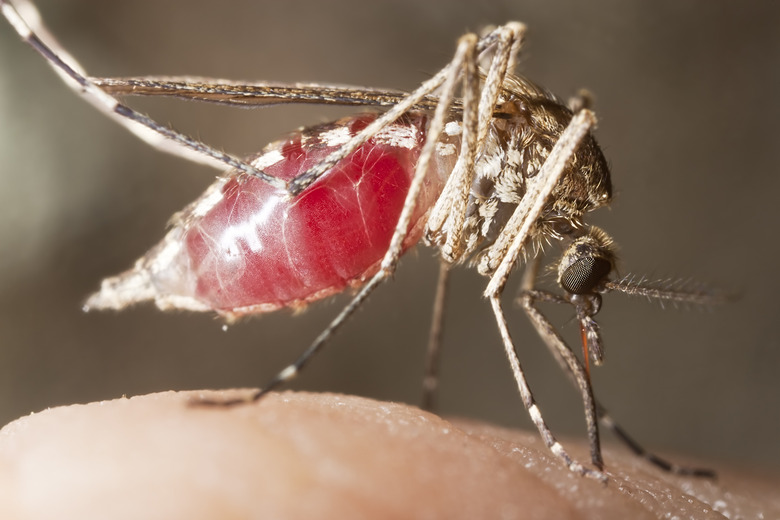Ivy And Plants That Harbor Mosquitoes
In the midst of summer's heat, a shady, well-vegetated yard invites relaxation. Unfortunately, it's also attractive to other visitors such as mosquitoes. Adult mosquitoes shelter in plants that provide good cover and that hold moisture and humidity.. Favored areas have dense vegetation and still air. Mosquitoes need standing water to breed in. Aquatic larvae can turn into adults in seven to 10 days, and there can be multiple generations a year. About 175 kinds of mosquitoes inhabit the United States, some preferring specific kinds of plant cover.
Ground Covers
Ground covers such as ivy (Hedera helix), which is hardy in U.S. Department of Agriculture plant hardiness zones 5 through 9, need frequent moisture for best growth. The foliage densely shades the ground, providing ample mosquito habitat. Many different ground covers, even shorter and non-woody plants such as violets (Viola odorata), hardy in U.S. Department of Agriculture plant hardiness zones 5 through 9, also harbor mosquitoes.
Tall Vegetation
In most yards, mosquitoes congregate in areas of tall grasses, densely leaved shrubs and in flower beds. Mowing areas of tall grass helps to reduce potential adult mosquito habitat. Ridding yards of tall weeds and overgrown areas also provides less cover. However, it's impractical to control adult mosquitoes by eliminating the landscaping plants they shelter among. Mosquitoes can fly for one to two miles from their breeding areas, so there's a constant influx as they migrate.
Trees and Treeholes
Some mosquitoes breed not in floodwaters, ponds or puddles, but in water contained in treeholes. Often, favored treeholes are 10 to 20 feet above the ground. Adults tend to shelter in the foliage of trees, so treehole mosquitoes are found in the upper reaches of the garden. Treehole mosquitoes are common pests of yards and parks that contain large trees. The females are long-lived, capable of producing six different batches of eggs before they die.
Mosquito Management
Although they're most obvious when you disturb the vegetation in which they're resting, mosquitoes don't originate there, and individual insects are usually short-lived, surviving for about two to three weeks, and only the females feed on blood. It's important to get rid of any water-holding containers on your property to cut down on breeding areas, but more will fly in until mosquitoes stop emerging for the year. Prevent mosquito bites by wearing protective, light-colored clothing, using insect repellant that contains DEET, and avoiding areas where mosquitoes are plentiful around twilight, when they're most liable to bite. Exclude them from your home with effective window and door screens, and eliminate densely vegetated areas that harbor mosquitoes from around doors, where disturbed mosquitoes can enter the house when doors open and close.
References
- Texas A&M Agrilife Extension Bexar County: Hungry Mosquitoes Looking for Unwary Hosts After June Rains
- University of Florida IFAS Extension: Hedera Helix
- Lady Bird Johnson Wildflower Center: Ask Mr. Smarty Plants
- National Gardening Association: Edible of the Month: Violets
- Iowa State University Extension: Spraying for Mosquitoes
